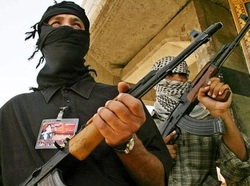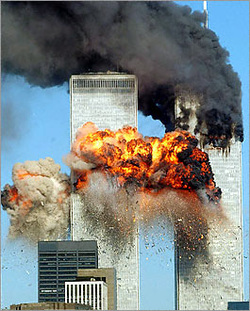Al Qaeda: Leaders and Status
Up until early 2011 the leader of Al Qaeda was Osama bin laden.
Born: March 10, 1957
Deceased: May 2, 2011
The current leader of Al Qaeda is Ayman al-Zawahiri.
Born: June 19, 1951
Born: March 10, 1957
Deceased: May 2, 2011
The current leader of Al Qaeda is Ayman al-Zawahiri.
Born: June 19, 1951
Basics:
Formed between 1988 and 1989, the Al Qaeda has between 500- 1000 followers. Al-Qaeda envision a complete separation from all foreign influences in Muslim countries, and the creation of a new Islamic resigm. one of their beliefs is that a Christian-Jewish alliance is conspiring to destroy Islam.
Current Opinion:
According to Pew polls, support for Al-Qaeda has been slightly dropped for parts of the Muslim world in the years before 2008. The numbers supporting suicide bombings in Indonesia, Lebanon, and Bangladesh, for instance, have dropped by half or more in the last five years. In Saudi Arabia, only 10 percent now have a favorable view of Al-Qaeda
Operations:
"There is no single headquarters. From 1991 to 1996, al-Qaeda worked out of Pakistan along the Afghan border, or inside Pakistani cities. During the Taliban's reign al-Qaeda shifted its base of operations into Afghanistan. To escape the U.S.-led war in Afghanistan, al-Qaeda's leadership once again sought refuge in Pakistan's tribal areas after September 11, 2001. Analysts also believe bin Laden's group is training or has trained most of the terrorist groups in Pakistan's tribal areas; it has introduced its practice of suicide bombings to both the Afghan and the Pakistani Taliban, as well as affiliated groups in Iraq, Yemen, and North Africa. One such bombing killed former Pakistani Prime Minister Benazir Bhutto in December 2007 at an election rally. But in Pakistan, at least, public sentiment for the group appears to be limited. In a poll released in February 2008, Terror Free Tomorrow, a Washington-based nonprofit group, found that only 24 percent of Pakistanis had a favorable opinion of bin Laden in 2008 as compared to 46 percent in August 2007. Similarly, al-Qaeda's popularity dropped from 33 percent to 18 percent."
Attacks:
- The February 2006 attack on the Abqaiq petroleum processing facility, the largest such facility in the world, in Saudi Arabia.
- The July 2005 bombings of the London public transportation system.
- The March 2004 bomb attacks on Madrid commuter trains, which killed nearly 200 people and left more than 1,800 injured.
- The May 2003 car bomb attacks on three residential compounds in Riyadh, Saudi Arabia.
- The November 2002 car bomb attack and a failed attempt to shoot down an Israeli jetliner with shoulder-fired missiles, both in Mombasa, Kenya.
- The October 2002 attack on a French tanker off the coast of Yemen.
- Several spring 2002 bombings in Pakistan.
- The April 2002 explosion of a fuel tanker outside a synagogue in Tunisia.
- The September 11, 2001, hijacking attacks on four U.S. airplanes, two of which crashed into the World Trade Center, and a third of which crashed into the Pentagon.
- The October 2000 U.S.S. Cole bombing.
- The August 1998 bombings of the U.S. embassies in Nairobi, Kenya, and Dar es Salaam, Tanzania.


